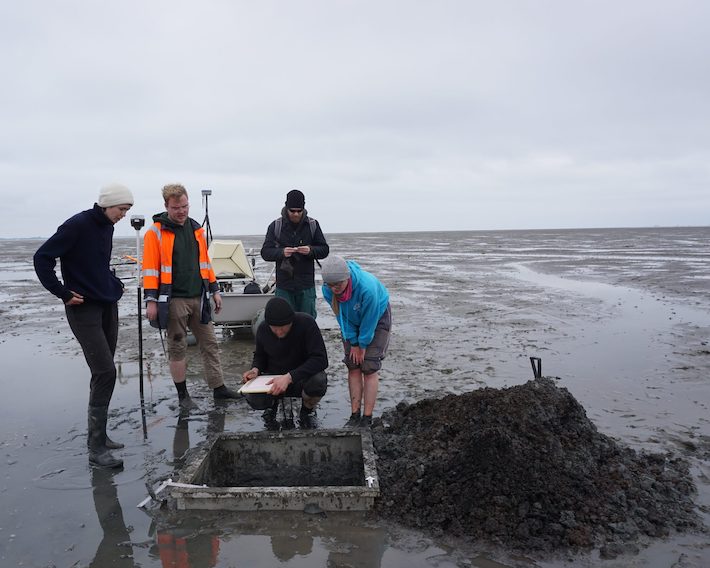 MAINZ, GERMANY—According to a statement released by Mainz University, traces of a large church have been found at Rungholt, a medieval trading center located on Germany’s northern coast that was submerged by storm surge in 1362. Research team member Dennis Wilken of Kiel University said that magnetic gradiometry, electromagnetic induction, and seismics were used to map the settlement’s remains, which are now hidden by mudflats in the UNESCO Wadden Sea World Heritage Site. Sediment cores, added Hanna Hadler of Mainz University, have also allowed scientists to map the placement of different structures and how the settlement changed over time. The study suggests that a church measuring about 130 feet long and 50 feet wide was situated in the center of the settlement. “The find thus joins the ranks of the large churches of North Frisia,” commented Bente Sven Majchczack of Kiel University. Traces of drainage systems, a sea dike with a tidal gate harbor, and two smaller churches have also been discovered. The researchers think Rungholt may have been a medieval administrative center. To read about the early history of Berlin, go to "Letter from Germany: Berlin's Medieval Origins."
MAINZ, GERMANY—According to a statement released by Mainz University, traces of a large church have been found at Rungholt, a medieval trading center located on Germany’s northern coast that was submerged by storm surge in 1362. Research team member Dennis Wilken of Kiel University said that magnetic gradiometry, electromagnetic induction, and seismics were used to map the settlement’s remains, which are now hidden by mudflats in the UNESCO Wadden Sea World Heritage Site. Sediment cores, added Hanna Hadler of Mainz University, have also allowed scientists to map the placement of different structures and how the settlement changed over time. The study suggests that a church measuring about 130 feet long and 50 feet wide was situated in the center of the settlement. “The find thus joins the ranks of the large churches of North Frisia,” commented Bente Sven Majchczack of Kiel University. Traces of drainage systems, a sea dike with a tidal gate harbor, and two smaller churches have also been discovered. The researchers think Rungholt may have been a medieval administrative center. To read about the early history of Berlin, go to "Letter from Germany: Berlin's Medieval Origins."
Medieval Settlement Mapped in Northern Germany’s Mudflats
